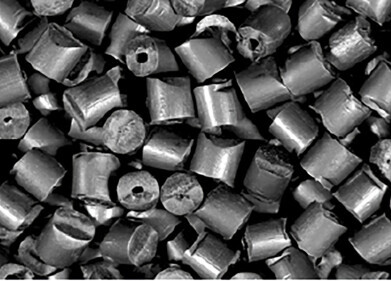Biofuel Industry News
How Do You Capture Carbon?
Jun 03 2022
Of all the greenhouse gases emitted by human activity, carbon dioxide (CO2) is one of the most abundant and harmful. In 2020, the gaseous chemical compound accounted for almost 80% of total human-driven greenhouse gas emissions in the United States. To address the emissions crisis, governments, companies and environmental organisations around the world are exploring new ways to capture carbon. Once secured, CO2 is either stored permanently to keep it out of the atmosphere or transformed into other products, such as fuel.
“Carbon capture, utilisation and storage, or CCUS, is an important emissions reduction technology that can be applied across the energy system,” reads a statement issued by the International Energy Agency.
Read on to find out more about the carbo capture revolution and how technologies are set to impact a myriad of industries and sectors.
Capturing industrial carbon emissions
The United States Environmental Protection Agency estimates 24% of greenhouse gas emissions come from industrial activity. To prevent CO2 from being released into the atmosphere, factories are rerouting emissions through towers filled with liquid solvent. The solvents absorb the carbon dioxide and are then heated in a second tower known as a stripper. This process extracts the CO2, which is then stored underground.
American multinational food processing company Archer-Daniels-Midland Company (ADM) is a leader in carbon capture. In 2017, the company launched a CO2 capture project at a corn processing factory in Decatur, Georgia. Every year, it extracts more than 1 million tonnes of carbon and stores it almost 2.5 kilometres underground.
Captured CO2 for fuel
Captured CO2 isn’t always stored underground, with an uptake in companies exploring ways to transform the chemical compound into fuel. Canadian company Carbon Engineering is using next-generation technology to extract CO2 from the atmosphere, then blend it with electrolysis-derived hydrogen to create eco-friendly fuel.
“This isn’t going to save the world from the impacts of climate change, but it’s going to be a big step on the path to a low-carbon economy,” asserts Carbon Engineering founder David Keith.
A multifaceted approach to CO2 reduction
Ultimately, climate experts maintain that a multifaceted approach is needed to reduce CO2 emissions and tackle global warming. This includes carbon capture technologies, as well as nature-based solutions such as planting more trees.
“Addressing climate change will require investment in technologies that help to limit future emissions, such as electric vehicles, and also the drawdown of carbon from the atmosphere,” says Tom Crowther, a professor of Global Ecosystem Ecology and a senior scientific advisor to the Trillion Tree Campaign run by the United Nations. “Nature-based solutions can help with both of these, but we will need thousands of solutions in combination. There is huge potential for direct carbon capture technology as part of a diverse climate plan.”
Moving forward, biofuels will also play a big role in addressing climate change. Find out more about some of the unconventional feedstocks being used to manufacture eco-friendly fuels, including municipal waste, in ‘Innovative and Unique Raw Materials Used Worldwide to Manufacture Biofuels’.
Digital Edition
PIN 25.2 Apr/May
April 2024
In this Edition Safety - Carbon monoxide toxic and flammable gas detection Analytical Instrumentation - Density: A fundamental parameter at critical stages within the petroleum sector...
View all digital editions
Events
May 03 2024 Seoul, South Korea
May 05 2024 Seville, Spain
May 06 2024 Riyadh, Saudi Arabia
May 06 2024 Houston, Tx, USA
May 06 2024 Houston, Tx, USA


















